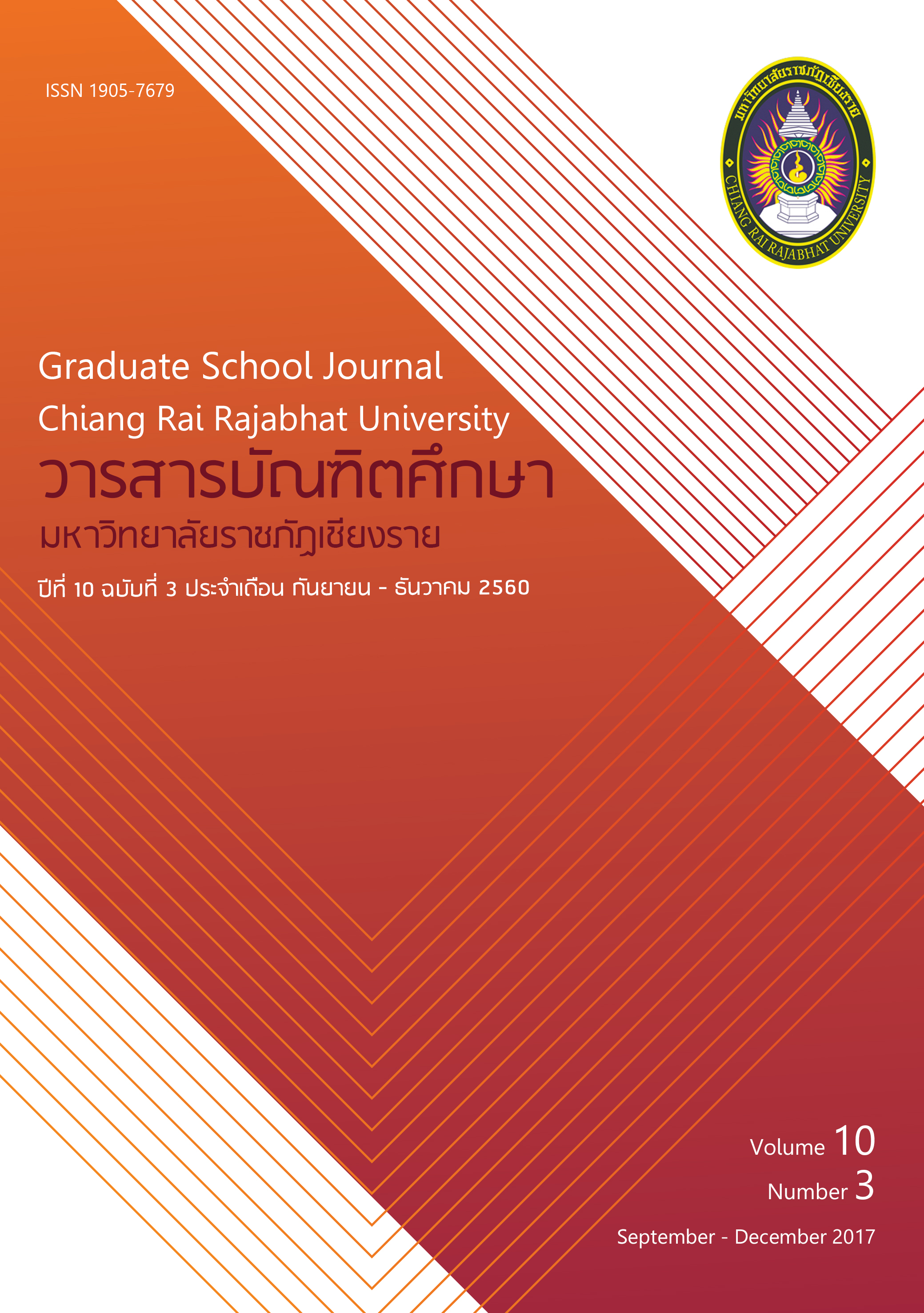Error Analysis and Recommendations of Teaching on Thai Students Learning Chinese Idioms
Main Article Content
Abstract
This thesis analysis the background and conditions regarding the teaching of Chinese
idioms to Thai students. The study involved 36 third and fourth year students of the Royal
Thai Chiangrai Rajabhat University of Literary Studies. A detailed questionnaire was prepared
and administered to the students. The questionnaire gauged the aptitude of the students in
the areas of concept, scope, pertinent features and origins of Chinese idioms. From the
analysis of results, recommendations were provided to enable Thai students improve their
understanding and proper usage of Chinese idioms.
The frst section of the questionnaire explored the interest and comprehension towards
Chinese idioms. The results showed a general low level of interest among the students. They
agreed their comprehension of Chinese idioms improved after undergoing a course of instruction
in Chinese idioms. The second section focused on the errors arising with the usage of Chinese
idioms. These errors are broadly classifed into 2 categories:
1. Understanding and comprehension errors:
1.1 Literal interpretation
1.2 Semantic misinterpretation
1.3 Poor mastery of semantic principles
2. Improper and poor construct of words
2.1 Incorrect use of expressions of feelings and meaning in Chinese idioms.
2.2 Word/Speech context
2.3 Lack of understanding of the principles of word construct in Chinese idioms
From the results of the questionnaire, one can also derive the causes of error,
namely:
1. Influence of mother tongue (Thai)
2. Limited understanding of the Chinese language and idioms
3. Cultural differences
4. Teaching methods
The direct consequence of these causes are either the erroneous usage of idioms or
the direct avoidance of idioms in speech of the students. Based on the causes of errors, the
researcher has made 6 recommendations, namely:
1. The setting up of an independent Chinese idiom course
2. Less rigid emphasis on classifcation of idioms for beginners
3. Enhance comparative methods
4. Comprehensive teaching material
5. Use of multi-media to aid educators
6. Instruction in speech context
These recommendations are provided with the aims of generating interest, increased
knowledge and understanding of Chinese idioms. They also served to concurrently reduce
mistakes, promote correct usage and confdence among Thai students. It is hope that these
recommendations provide educators, authors and readers alike, an aid and reference in
research and policy formulation.
Article Details
บทความที่ได้รับการตีพิมพ์เป็นลิขสิทธิ์ของวารสารมหาวิทยาลัยราชภัฎเชียงราย
ข้อความที่ปรากฏในบทความแต่ละเรื่องในวารสารวิชาการเล่มนี้เป็นความคิดเห็นส่วนตัวของผู้เขียนแต่ละท่านไม่เกี่ยวข้องกับมหาวิทยาลัยราชภัฎเชียงราย และคณาจารย์ท่านอื่นๆในมหาวิทยาลัยฯ แต่อย่างใด ความรับผิดชอบองค์ประกอบทั้งหมดของบทความแต่ละเรื่องเป็นของผู้เขียนแต่ละท่าน หากมีความผิดพลาดใดๆ ผู้เขียนแต่ละท่านจะรับผิดชอบบทความของตนเองแต่ผู้เดียว
References
杨寄洲.(2009).《汉语教程》.北京:北京语言文化大学出版社.
郑铁生、杨少芳.(2008).《阅读教程1》.上海:上海外语教育出版社.
张丽娜.(2007).《汉语系列阅读》.(修订版).北京:北京语言文化出
版社.
周小兵、张世涛.(2005).《中级汉语阅读教程(1、2)》.北京: 北京
大学出版社.
中国社会科学院语言研究所词典编辑室.(2012).《现代汉语词典》.
(第六版).北京:商务印书馆.
牛思涌.(1989).熟语探微.郑州大学学报,(第3期),107页-110页

